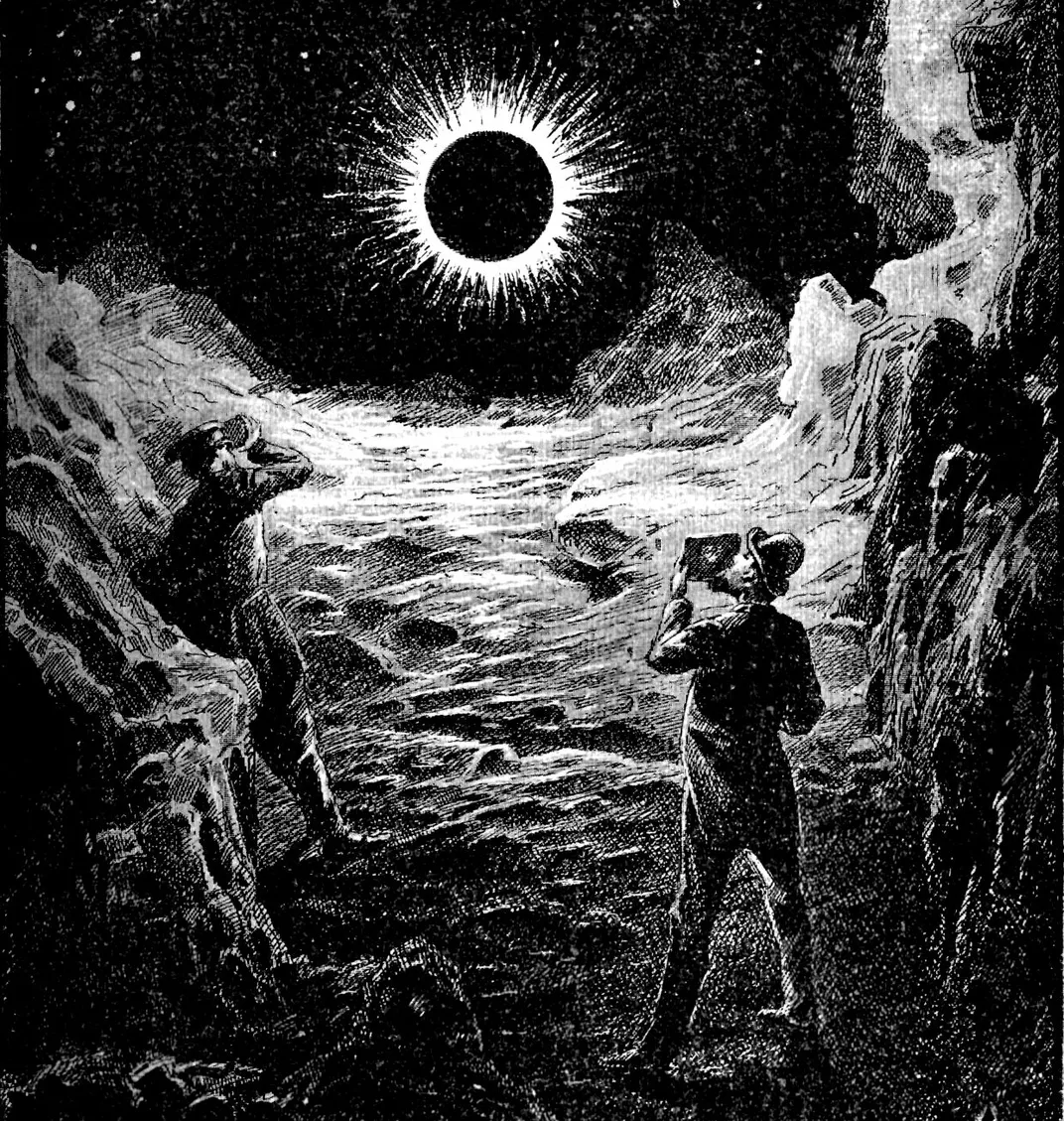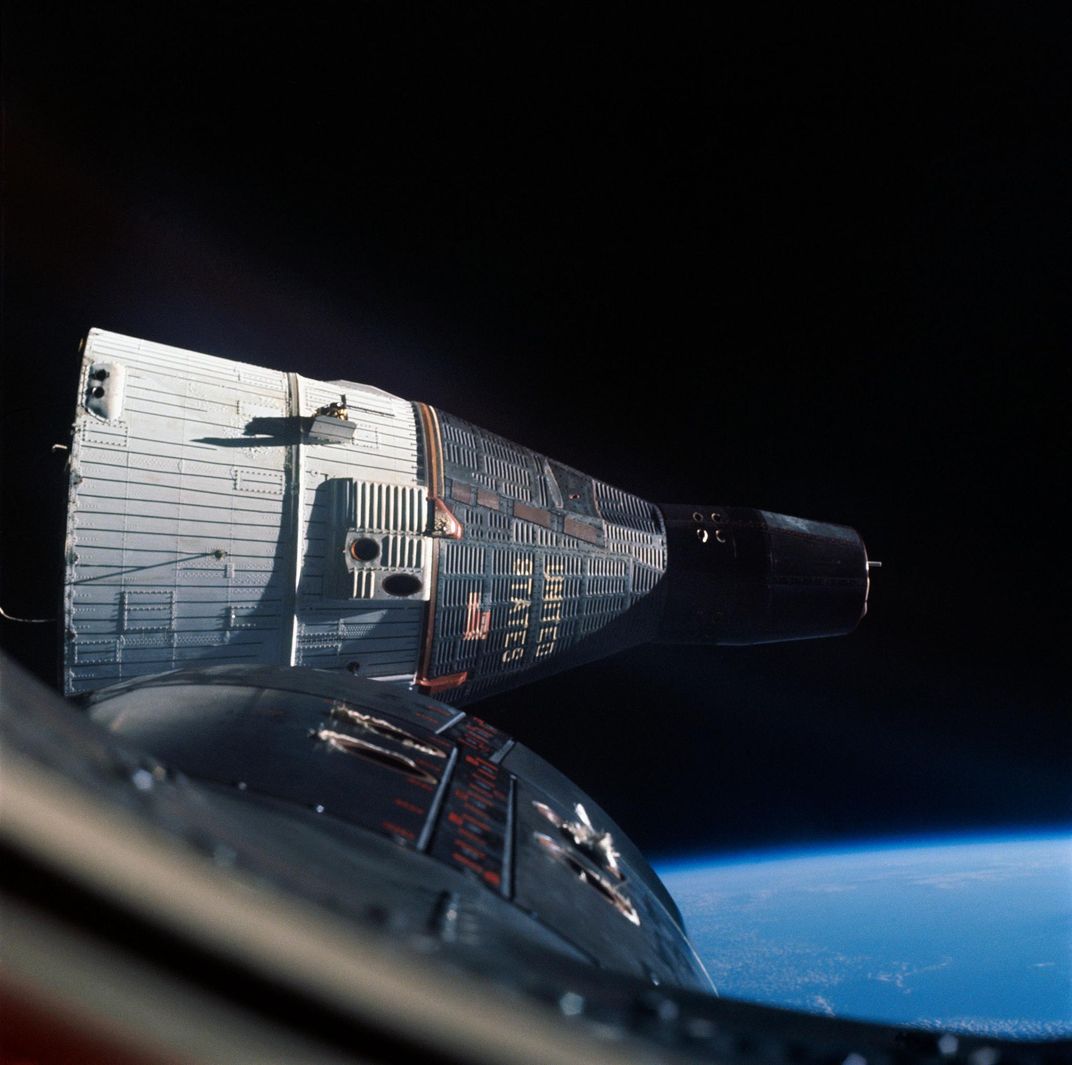The Missions to the Moon That Never Left the Drawing Board
From pioneers of science fiction to the height of the space race, these are the ideas for lunar flight that never launched
:focal(2627x1902:2628x1903)/https://tf-cmsv2-smithsonianmag-media.s3.amazonaws.com/filer/99/26/99265bba-b743-49dd-8337-2cc19628246e/aakwft.jpg)
On December 21, 1968, 50 years ago today, the crew of Apollo 8 launched atop a Saturn V rocket on the first mission to fly to the moon. The crew never landed, but their Earthrise photo became iconic, their Christmas Eve dispatches from the moon captivated millions of people listening across the globe, and, a few short months later, humanity would land on the lunar surface.
As the first flight to the moon and back, Apollo 8 lead humanity on a great journey of exploration. But as ambitious as the Apollo program was, the idea of flying to the moon didn’t come in a vacuum, and the dream of visiting the moon significantly predates President John F. Kennedy’s speech at Rice University, in which he proclaimed, “we choose to go to the moon.”
One of the first lunar travel stories came in 79 AD from Lucian’s True History, in which a whirlwind takes a group of travelers to the moon, dropping them into the midst of an interplanetary war. By 1657, Cyrano de Bergerac’s Histoire Comique de La Lune envisioned travel by multi-stage rocket to the moon.

But of the “fiction” works of rocketry, perhaps the most influential were written by Konstantin Tsiolkovsky, especially his 1893 novel On the Moon. Much of Tsiolkovsky’s fiction was intended to illustrate genuine engineering concepts, and his actual research focused on the basics of rocketry and the eventual goal of space exploration.
But in 1938, one of the first serious concepts for a mission to the moon was devised—a few years before history’s first official spaceflight.
The Dreamers
The British Interplanetary Society (BIS) has never built a rocket. They’ve never launched a single spacecraft. In an interview earlier this year, British astronomer Jonathan McDowell of the Harvard-Smithsonian Center for Astrophysics described the BIS as “pretty well regarded for a semi-pro/semi-amateur group,” made up of engineers, astronomers and enthusiasts trying to push humanity to new frontiers—even if the technology is not feasible at this moment. Their most famous contribution to space research was perhaps Project Daedalus, an ambitious study in the 1970s describing the theoretical possibility of flying to Barnard’s Star, the second closest star system to Earth, within a human lifespan using nuclear rockets.
“The BIS is a theory organization, not a practical one,” McDowell says. “Their specific studies don't get implemented, but are influential in people's thinking.”
A 1938 BIS study proved one of the earliest plausible ways to get to the moon. The organization envisioned a giant five-stage rocket with a habitat on top to transport three astronauts for a two-week stay on the lunar surface. They used as much contemporary technology as possible to prove that the idea was feasible (though prohibitively expensive at the time).
/https://tf-cmsv2-smithsonianmag-media.s3.amazonaws.com/filer/1e/18/1e187181-0219-4e7b-a21c-e06a58eff48b/f7n80n.jpg)
But the first space launches were not to the moon; they were all bombs. Nazi Germany designed the V-2 rocket as an intercontinental ballistic missile capable of devastating distant targets, and several crossed over the Von Karman line—the boundary of space—though all flights were suborbital. The first V-2 to reach space did so in June 1944. After the war, the United States imported several Nazi rocket scientists to begin their own space ambitions, with the nation’s first space launch of Project Hermes crossing into space on May 10, 1946, carrying the first science payload to leave the atmosphere, a cosmic ray experiment, up on a 70-mile journey.
As tensions between the United States and the Soviet Union escalated, so too did their space ambitions. Of course, much of the competition involved backdoor weapons development. The Soviets also rounded up ex-Nazi rocket scientists and built a replica of the V-2 that first launched in 1951. Even at the time, it was becoming clear that human spaceflight was the next step.
NASA’s Early Ideas
Anna Reser, a graduate student at the University of Oklahoma, studies the culture of early NASA. She says that, while Kennedy’s 1961 speech in which we “can, should and must” go to the moon catalyzed the public imagination around a moon landing, there were earlier influential ideas supporting a lunar flight. In fact, the leading rocket scientist brought in from Germany, Wernher von Braun, outlined the moon as one of several steps to humanity colonizing the solar system in a series of articles published in Colliers in 1952*.
“My understanding has always been that [Kennedy’s speech] was the public rah-rah, but NASA had already been doing studies, and that was one of von Braun’s goals, to get to the moon,” Reser says. “Getting to the moon has been the unstated goal of space exploration going back to Jules Verne,” the 19th-century French writer.
/https://tf-cmsv2-smithsonianmag-media.s3.amazonaws.com/filer/95/e7/95e7061f-6ccc-4d5b-80e1-8de2a4826aa8/new-ship.png)
The 1961 speech certainly changed the culture at NASA, Reser says, as the space agency took Kennedy’s remarks as a “personal challenge” from that day forward. While the Russians beat the United States into space, the moon represented a tantalizing comeback.
“By the end of Project Mercury, the goal was already the moon, and Kennedy made his announcement the spring or early summer of 1961, right after Alan Shepard’s flight, that the goal was the moon,” Reser says. “The Gemini program was specifically, ‘let’s get ready to go to the moon.’”
But before the Apollo program, NASA toyed with the idea of expanding Gemini. The program, which developed vital technologies such as docking with another spacecraft and venturing outside the vehicle in a space suit, was seen as a springboard for other possible missions. For example, it was the basis for the Manned Orbital Laboratory, a U.S. Air Force space station concept that launched only as an uncrewed prototype. There were also ideas for an “extended cab” style Gemini that could haul up to a dozen astronauts to orbit.
And as a highly ambitious possibility, studies in the early 1960s looked at using a modified Gemini capsule as a lunar vehicle. There were a variety of configurations that were considered, including having the Gemini rendezvous with a separate launch vehicle in orbit with enough thrust to get it to the moon and doing a quick flyby before coming home. Other ideas involved full-scale lunar orbits.

Even a few moon landing ideas came out of Gemini. One involved a small, one-person lander that would carry a single astronaut from a crew of two down to the surface. It was considered as an alternative to Apollo, which was shaping up to be heavier, more complicated and more expensive. And the worlds of Gemini and Apollo were, ever so briefly, one, thanks to a 1962 study that proposed using the Gemini craft itself as a lander.
The eager engineers at NASA even considered Gemini as a “rescue spacecraft” to be sent autonomously ahead of Apollo spacecraft in case a mission failure left the astronauts stranded. With Kennedy’s blessing, however, NASA quickly moved from Gemini to Project Apollo.
In Russia
NASA had its sights set firmly on the moon, but according to Asif Siddiqi, a Fordham University historian of Soviet spaceflight, the Russians were thinking about much more—in the end, to their peril.
“Mars was an ultimate goal in human missions,” Siddiqi says. “They always had a Mars research team into the 1970s, but the moon really diverted their plans."
From their first spaceflight in 1957 to around 1964, Russia’s long-term goal was human exploration of Mars. But as NASA began making strides toward a less ambitious—but more realistic—238,000 mile journey to the moon, the Soviets turned to a lunar mission as well.
/https://tf-cmsv2-smithsonianmag-media.s3.amazonaws.com/filer/66/0b/660ba400-94f1-4558-af28-4ad19d0edb0a/1980_cpa_5064.jpg)
In 1964, the Soviet Union began designing a mission for a lunar landing—bigger and more ambitious than Apollo. They would start small, planning to take a modified Soyuz craft around the moon and back to Earth in 1967 to commemorate the 50th anniversary of the Bolshevik Revolution.
But in April 1967, cosmonaut Vladimir Komarov was killed aboard the Soyuz 1 flight when his parachute failed to deploy, setting back Soviet spaceflight ambitions. “In an alternate universe, you imagine they’d launch in early December and become the first group to go to the moon,” Siddiqi says.
The Soviets kept their eye on the moon throughout the Zond program. They had early success with Zond 5 in 1968, the first lunar orbiter to make it to the moon and return. (Zond 4 had made it to the moon, but crashed back to Earth.) Zond 5 even carried a few Earthlings around the moon—two tortoises, a few insects and some planets.
As Zond demonstrated some of the technology needed to get to the moon, the Soviets were aggressively working to build a rocket capable of carrying a human flight. A group of cosmonauts trained for the mission, including Alexei Leonov, the first human to “walk” in space.
But Zond 6, intended to further demonstrate Soviet lunar technology, crashed into Earth upon its return—hard. “Once Zond 6 crash landed, the management said ‘we can’t fly cosmonauts on the next mission,’” Siddiqi says.
Even if Zond 6 had been a success, the U.S.S.R. could never quite get the N-1 rocket first stage booster to work, which was the essential part of the lift needed to get humans to the moon. Ultimately, this undid their lunar ambitions, as the Americans landed on the moon in July 1969—taking a “victory” in the space race after the Soviets had racked up so many firsts. “By that time, there’s no point in flying because the goal of the mission was to be first,” Siddiqi says.
The Soviet plans for long-term missions had been ambitious—several cosmonauts in a giant lander spending several days on the moon was on the drawing board—but the continued failure of the N-1 eventually led to the program’s official cancellation in 1974. At the program’s rate of development, Siddiqi suspects the Soviets wouldn’t have made it to the moon until the late 1970s.
Talk of a Return
After Soviet ambitions were scrapped, the Americans went to the moon a few more times, but the popularity of the Apollo program—never as high as hindsight would have us believe—waned. Apollo 18 through 20 were cancelled. NASA looked toward Skylab and the Space Shuttle, and the Soviets, too, began thinking in terms of orbiting space stations.
The moon has come up in discussions since, most notably when it was a major cornerstone of President George W. Bush’s Constellation program, which was cancelled by the Obama administration in 2010, citing escalating costs. There are renewed discussions today, as the Trump administration looks toward a lunar outpost. Meanwhile, SpaceX and Blue Origin both hope to fly customers to the moon as a tourist destination.
It’s a renewal of the dreams of the 1950s and 1960s, and a return to space—but as we’ve seen, the road to the moon is paved with scrapped plans and abandoned concepts that never quite saw their destiny fulfilled.
*Editor’s Note, July 29, 2019: A previous version of this article incorrectly stated that Wernher von Braun’s series of articles in Colliers was published in 1958, when, in fact, they were published in 1952. The story has been edited to correct that fact.
/https://tf-cmsv2-smithsonianmag-media.s3.amazonaws.com/accounts/headshot/IMG_3077.jpg)
/https://tf-cmsv2-smithsonianmag-media.s3.amazonaws.com/accounts/headshot/IMG_3077.jpg)